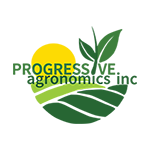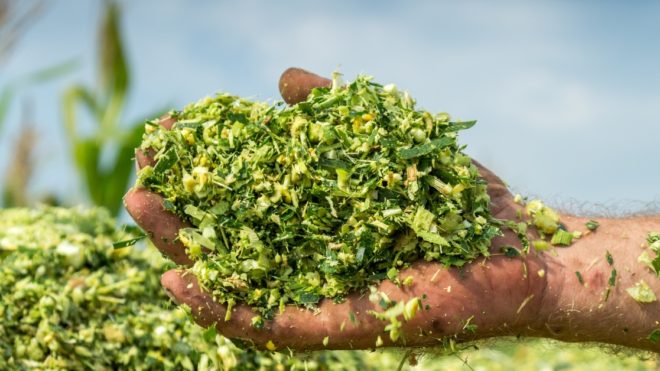How many of us pay for insurance on the homes in which we live? Ever wonder if it’s worth it? While this article is about silage inoculants and not about homeowner’s insurance, I often get a very similar question when discussing the use of silage and forage inoculants: ‘How do I know if I am getting a return on investment when I apply that inoculant?’
The answer isn’t as clear as one might think. While my knee-jerk reaction is to say, ‘Yes, you do get a return on investment,’ the reality is, ‘Yes, you most likely get a return on investment.’ So, if I can’t guarantee you a return on investment, why should you use it?
Factors such as particle size of chopped forage/silage, consistency of particle size, moisture content, how well it was packed in the silo, bunker, tube, or pile, and how much oxygen can permeate through its cover or encasing method all play a role in the efficacy of the fermentation process. To simplify, by adding an inoculant, we are merely adding good bacteria and enzymes to the silage/forage to begin the fermentation process more rapidly.
Although there are many bacteria already present in the forage/silage that will naturally allow it to undergo the fermentation process, keep in mind that each bacterial species has different purposes and growing conditions that they prefer. This is where the particle size and moisture content come into play. If a certain bacterium induces fermentation at 64% moisture content and we are above or below that level, it will still work, but at a slower rate. In turn, this puts your feed product at a greater risk of spoilage. By adding a silage inoculant, we are ensuring a higher colony forming unit (cfu) of many different species of bacteria that reduce environmental risks faced during chopping season and ultimately produce a high-quality feed source for your livestock year long.
We’ve discussed the question of ‘Should I apply?’ What about the ‘What, or which one, should I apply?’ There are many different brands and types of inoculants on the market. While I will not claim one is better than the other, I will offer a method to compare different products. When examining a product, look at the cfu count on a per gram fed basis. This may be difficult to find on some labels, and some math may have to be done, but I encourage you to spend the extra time because, ultimately, the quantity of good bacteria that is being applied is important. Once you determine this, you can compare product to product and examine how many different species of bacteria are included in that same package. Remember, you don’t need hundreds, but having a diverse package is good practice so that each species can perform in its ideal environment.
At Beck’s, we offer three basic inoculant products plus a mold inhibitor:
BioXtra™ I is an economical option containing four different species of homofermenting bacteria. These bacteria produce lactic acid to assist in dropping the pH level. BIO-XTRA™ I is best utilized when the environmental factors are most favorable, and we minimize as much outside risk of spoilage in both corn silage and haylage. Think of it as your basic insurance policy.
BioXtra™ II contains four different species of homofermenting bacteria that produce lactic acid to assist in dropping the pH level at double the cfus of BioXtra I. This improves the speed and efficiency of the fermentation process in both haylage and corn silage. One of the heterofermenting bacteria, L. brevis, produces both lactic and acetic acid, which aids with back-end aerobic stability. Think of this product as a mid-level insurance policy for silage and a specialized insurance policy for haylage.
BioXtra™ + contains five species of homofermenting bacteria that produce lactic acid to assist in dropping the pH level and one heterofermenting bacteria that produces both lactic and acetic acid that aides with back-end aerobic stability. In addition to these bacteria, BIO-XTRA + includes a proprietary strain of Enterococcus Faecium that accelerates starch digestibility. This product is best utilized when applied to high moisture corn and, specifically, high starch content feedstuff. BIO-XTRA + offers the best fermentation efficiency when silage chopping conditions or kernel processing are less than ideal. Think of this product as a specialized insurance policy that offers protection on specialized products.
BioXtra™ Mold Inhibitor is a combination of food-grade preservatives that prevent the growth of molds and wild yeast during and after fermentation for increased aerobic stability. This product is designed to partner with any of our BIO-XTRA lineup specifically to improve shelf-life during feed-out. By combining the mold inhibitor and any products from the BIO-XTRA inoculant lineup, we can accomplish both an efficient fermentation and improved shelf-life/aerobic stability. Additionally, you get an improved fermentation efficiency over any L. buchneri product and comparable or better aerobic stability in a very economical manner.
For more information on these products, visit beckshybrids.com/Bio-Xtra/
~ Matt Lawson – Seed Advisor

